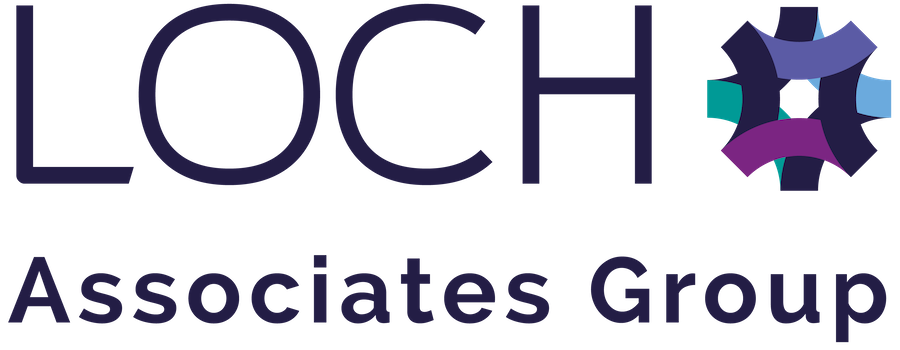An employee’s sub-standard quality of work or lack of productivity can be detrimental to the workplace, negatively influencing their colleagues and, ultimately, impacting the company’s overall success.
While it may seem unfair to say that one bad apple can spoil the bunch, the statistics do point to this old adage being the case. For example, analytics company Gallup surveyed more than 72,000 employees and found that disengagement, often a key driver behind poor performance, was indeed infectious. As a result, companies with high numbers of disengaged employees can experience 37% higher absenteeism, as well as 15% lower profitability.
As such, it’s important for any business to address poor performance before it presents a significant problem. The best way to do this is to implement an improvement plan – encouraging development and correcting issues through a structured, results-driven framework.
Nobody likes to hear that their work isn’t good enough, but taking this methodical approach to assist the employee can be a show of support, and provide an enhanced focus to their work. As we’ll explain below, a performance improvement plan accommodates improvement, but it also outlines the consequences if things don’t get better, a relevant fact if a workplace matter becomes a legal one.

What is a performance improvement plan?
A performance improvement plan (PIP) is a formal document drawn up by an employer to help an employee meet expectations, and achieve the desired level of productivity or proficiency in their role.
As an example, Steve has worked as a sales executive for five years, during which his performance has been measured by the number of conversions he makes each month. For the first three years, he exceeded expectations, but since then he has consistently failed to meet them, highlighting him as an employee who may need additional assistance.
To provide that support, Steve’s manager might create a performance improvement plan. This should detail areas of concern (such as failing to meet sales targets), improvement goals, the timeframe in which they are to be achieved, and any training that will be given to Steve to help him reach his objective or objectives.
Regular meetings can then be arranged to track performance improvements, and further discuss any concerns. At the end of the process, Steve will have either improved to meet expectations, or failed to do so. In the latter case, you may opt to provide further support, or additional warnings that his performance is not good enough, eventually leading to dismissal.
Now that we’ve defined a performance improvement plan, let’s explore the practical steps necessary to implement one effectively.
How to implement a performance improvement plan?
Assess current performance
Before creating a performance improvement plan, it’s essential to conduct a thorough assessment of the employee’s current performance. This helps to decide if one is necessary, and if it is, to make sure it targets only the areas required.
Your assessment will serve as a foundation for the plan by identifying areas of improvement and trends, helping to set realistic goals for the employee to meet. Data such as sales figures, project completion rates, customer reviews, and colleague reviews will all help with this process, providing you with valuable insights into the employee’s strengths and weaknesses.
Set SMART goals
Having identified an area or areas in which the employee needs to improve, you must set and communicate effective goals by which their performance can be measured. Without them, any progress or expectations will lack clarity and direction, leaving the employee unsure about what needs to be achieved and by when.
SMART goals act as your roadmap, with the destination being performance improvement. They get their name from the following acronym:
S – Specific
Your goal should clearly define exactly what you want the employee to improve in a precise and unambiguous way. Something specific might be the employee’s monthly sales, the number of IT helpdesk tickets completed, or their overall customer feedback score, all of which can be objectively defined and easily tracked.
M – Measurable
Telling an employee that you expect to see their sales figures or customer feedback score improve is a good starting point, but you must specify the minimum threshold for improvement. If, for example, the expectation is that an employee makes 12 sales per month, this expectation might be highlighted as part of the performance improvement plan. Alternatively, you might make a temporary concession, encouraging them to make eight sales instead of the full 12.
A – Achievable
Wanting your employees to exceed and outperform expectations is understandable, but it’s essential to strike a fair balance between ambitious goals and achievable ones. Aiming high can certainly inspire growth and development, but setting unrealistic goals has the potential to demotivate the employee, and prevent any improvement from taking place.
R – Relevant
You should make sure any goals that are part of the employee’s performance improvement plan are relevant to their role, and align with your organisation’s wider objectives. Asking them to improve their customer service skills if they don’t occupy a client-facing role may be seen as irrelevant, and cause confusion and frustration. Likewise, setting a goal for a member of the sales team who is exceeding their targets to improve their administration abilities might not be an effective use of their time.
T – Time-bound
There should be a definitive timeframe within which the employee’s objectives are expected to be achieved. Without one in place, the goals can lack urgency and accountability, derailing what would otherwise have been an effective performance improvement plan. Whether the timeframe is a matter of months or a whole year, it is important to strike a balance between ambitious and realistic. Steady but slow progress over a longer period of time is far better than a tight timescale that demotivates the employee, and causes no improvement to be made.
Provide additional training
For some employees, the performance plan itself will be enough to improve their efforts and output. Others are likely to need additional training and education. By providing those learning opportunities, you are equipping employees who need a boost with the tools required to meet their measurable targets within the timeframe.
The benefits of additional learning go beyond performance improvement; according to Forbes, 76% of employees say they are more likely to stay at a company that offers it, improving retention rates and reducing recruitment costs.
Monitor and track progress
An ongoing assessment by the person implementing the performance improvement plan ensures that the employee remains on track, and gives them the best chance of meeting their targets within the specified timeframe. You might check sales figures logged on the system, feedback from customers or colleagues, timesheets, or speak to the employee themself to judge whether the plan is proving to be successful, or whether it requires some fine-tuning.
Open communication during progress monitoring is essential. It encourages the employee to share their experiences, ask questions, and seek clarification, fostering a collaborative environment where everyone is committed to the employee’s development.
Deal with continued performance issues
If your implemented performance improvement plan has been a success, results will continue to move in a positive direction, and the process can come to a satisfying conclusion. If challenges persist or new issues arise, however, it’s crucial to remain adaptable and responsive. This may involve revisiting and refining the plan, offering further support, or exploring alternative strategies to ensure the employee’s ongoing development, and their alignment with organisational objectives.
Remember, the ultimate aim is to foster growth, enhance productivity, and contribute to collective success, even in the face of continued challenges. That being said, it’s also important to recognise that even with the best PIP in the world, an employee might continue to struggle. Maybe they are not a good fit with your organisation, or the role just isn’t for them.
If there has been no improvement, and the employee lacks the willingness to improve, consider warning them that their contract is at risk of termination. This might prove to be the sobering step necessary to finally see some improvement, or you may need to take the final step and terminate their contract of employment.

Legal implications of a performance improvement plan
When implementing an employee performance improvement plan, it’s vital that you consider the legal implications of doing so. For example, there must be a valid reason for placing the employee onto a PIP which has been identified through investigation, and then communicated to them.
The implementation of a PIP should be realistic and achievable, setting goals within a reasonable timeframe and ideally jointly agreed between both the employer/employee. The PIP should be used as a means to help support the employee rather than to penalise.
If you fail to give an employee sufficient support, set unrealistic goals or fail to give sufficient time for them to improve, the fairness of the process could be called into question and you may find yourself facing a legal challenge in the Employment Tribunal.
If at the end of the PIP there has been no improvement in performance despite the plan, you might choose to issue a first or final written warning to the employee. Alternatively, if the final warning has already been issued, or the unsatisfactory performance is sufficiently serious, you might choose to terminate their employment contract.
Every disciplinary decision (such as written warnings or termination) can be appealed by the employee, and this fact should be effectively communicated to them in writing. Failure to do so could result in legal action being taken against you.
A performance improvement plan can be a very effective way of correcting an employee’s efforts in the workplace through SMART goals and realistic timeframes. However, one must only be implemented when all of the legal implications associated with it have been properly considered. Failure to act according to UK employment law and the employee’s contract could result in legal action, which has the potential to be financially and reputationally damaging.
The best way to ensure that a PIP is implemented effectively and compliantly is to engage the services of employment law and HR specialists, such as Loch Associates Group. We can help your organisation to correct an employee’s behaviour or performance through a performance improvement plan, and if necessary, provide support in the event of disciplinary action such as contract termination.
Speak to us today for more information on how our dedicated team can help.








